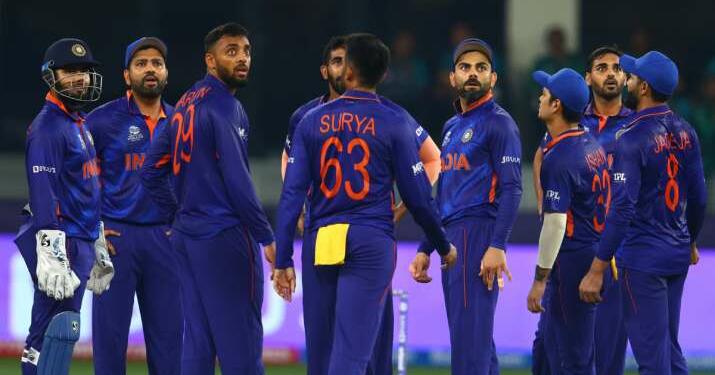The recent tour of South Africa ended with an utter humiliation for the Indian cricket team. Against an under performing Proteas side, our team lost 3-0 in ODIs and 2-1 in tests. The unexpected loss has raised lots of questions on India’s supposedly strong bench strength.
Australian Coach had praised India’s bench-strength
In January 2021, India had registered a triumphant victory on a strong Australian side in Brisbane. The remarkable observation about that victory was the superiority of India’s bench strength.
India was without Virat Kohli in the batting line-up. Similarly, the Indian bowling lineup was one of the most inexperienced in history. All 5-bowlers applying their trade in the match were visiting Australian shores for the first time.
However, the team pinned down the Kangaroo eleven composed of bowlers like ever-reliable Pat Cummins, fearsome Mitchell Starc, and lanky Josh Hazlewood. Justin Langer, Australian coach had remarked, “never underestimate the Indians, if you are picked from 1.5 billion Indians, you have to be tough”.
Read more: India-Australia series will go a long way in re-establishing the popularity of Test Cricket
So, what happened within one year of that victory? Is it that India’s quality of bench strength has gone down? Or is it that bench strength was not the factor in the first place?
Most of our bench strength does not have proven domestic records
Currently, most of the players having an iota of possibility of getting selected in the Indian playing XI can boast of somewhat stellar performance in India’s domestic circuits. Just to be certain, the domestic circuit refers to tournaments like Ranji Trophy, Vijay Hazare trophy etc.
Players like Jasprit Bumrah, K L Rahul, Rishab Pant have a phenomenal first-class record to back the reasoning behind their selection. Unfortunately, the same cannot be confirmed about everyone in India’s bench strength line-up.
While Suryakumar Yadav and Shreyas Iyer do have exceptional first-class records behind them, others like Yazuvendra Chahal and Prashidh Krishna have either poor records in domestic cricket or are simply inexperienced.
Why are they chosen despite their poor domestic cricket record?
The thing is modern-day Indian team is selected based more on IPL performance than Ranji Trophy. It is believed that if a player has shown a strong temperament by performing well in front of stalwarts playing in IPL, they will have no problem in adjusting to international cricket.
Read more: How Arun Jaitley turned Delhi into a cricketing powerhouse and ended Mumbai’s monopoly over cricket
However, international cricket is not that simple. It is also about skills and grinding. When you play domestic cricket, your skills get trained to be deployed in varying conditions. Four-day cricket develops muscle memory.
When a domestically proven experienced player goes on to play in international cricket, they adapt quickly and prove out to be a better player in long run. Michael Hussey is one such example.
How do they perform in international cricket?
Initially, it is relatively easier for a fast-tracked player to perform well. He is just developing his game and is testing it in front of the best players. This accelerates growth. Moreover, most of these players bring different kinds of variations, making it tough for the opposition to decode.
But, as soon as they cross a certain threshold, they are demystified. Opposition gets a measure of them and these players hit an abnormal halt. These players have developed muscle against a certain variety of players, however, when push comes to shove, they do not have any reserve set of skills to rely on.
The downfall of players like Yazuvendra Chahal and Kuldeep Yadav can be directly traced back to these. Both have a stellar international record, but in first-class cricket, they are average at best.
Horses for Courses did not help either
Previous management of Kohli-Shastri also holds a certain degree of blame for India’s unstable bench strength. They kept rotating players without any medical reasons, which did not allow a newbie to have full confidence in his abilities. Now, when they are finally required to perform, problems are plenty for them to solve.
Read more: Horses for Courses – A Shastri-Kohli strategy that was created only to favour the Coach-Captain duo
If Karun Nair can be dropped just after scoring a triple century, it speaks volumes about our domestic set-up. Ranji has honed players like K L Rahul, Rohit Sharma, Murli Vijay and they have done quite well in the top circuit. Other players need to follow a similar track. IPL can create only a certain kind of bench strength, all-round skills come only from the rigorousness of first-class cricket.



































Shastri-Kohli’s use and throw policy, horses for courses, has destroyed any bench strength that India may have developed. Constantly rotating players breeds insecurity, erases muscle memory and ends up creating rifts in the team. The decision to leave out Ashwin, not give a selected Karun Nair a chance to play in England just as Vihari was dropped despite a stellar performance in SA are just a few examples of the duo’s failed selection policy. If today India doesn’t even have a captain to takeover blame is on Shastri-Kohli and BCCI’s management which gave them a free hand.